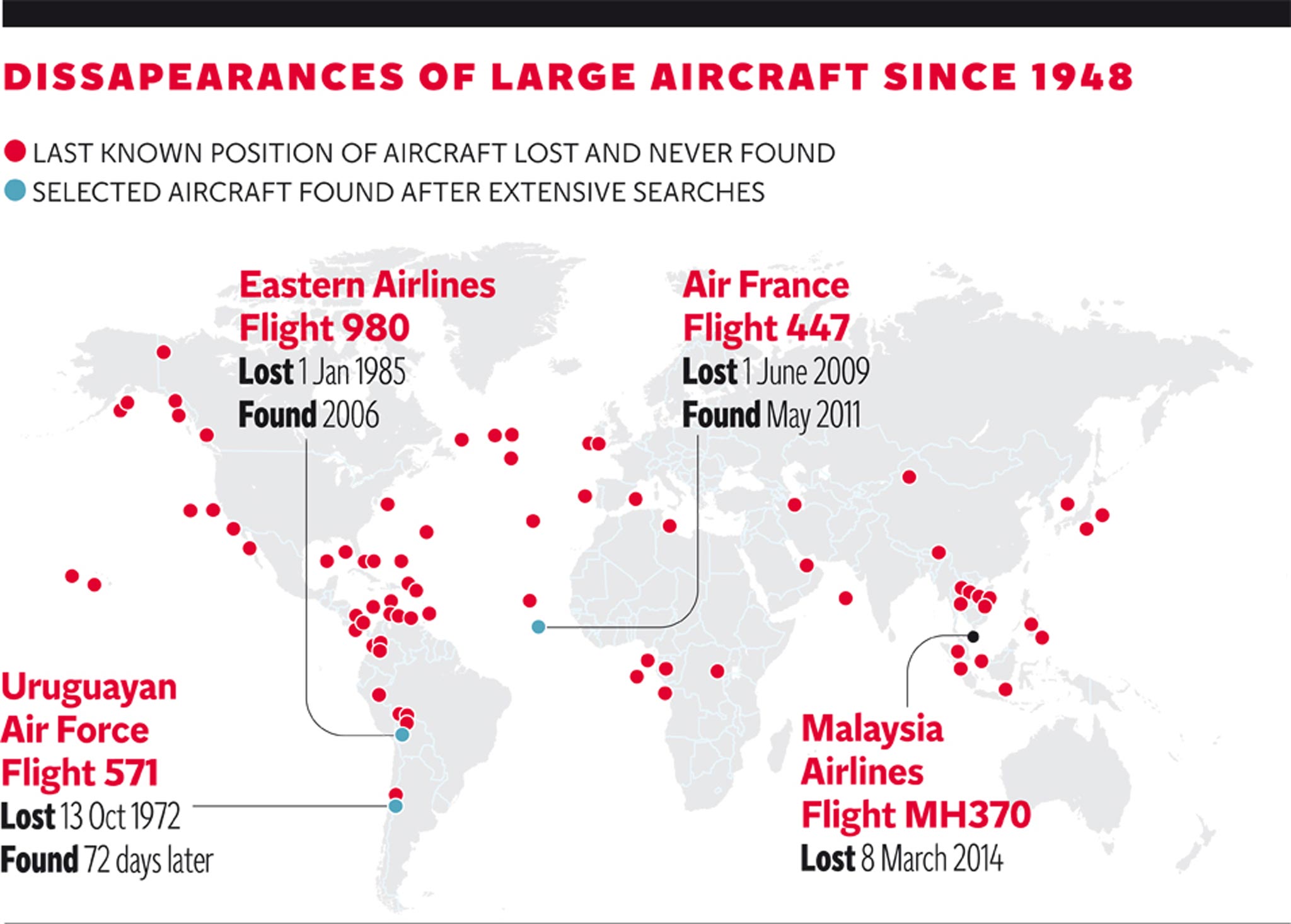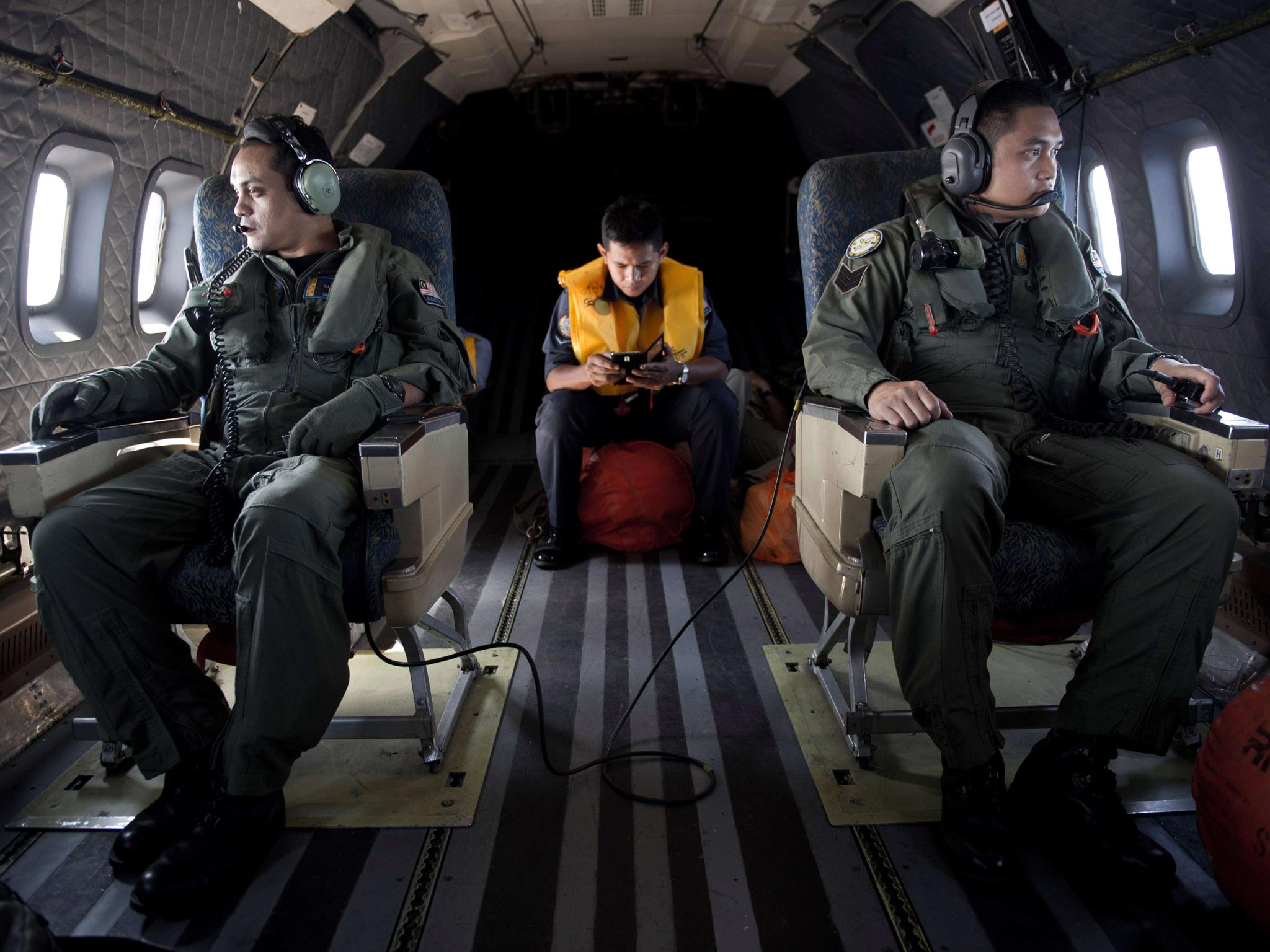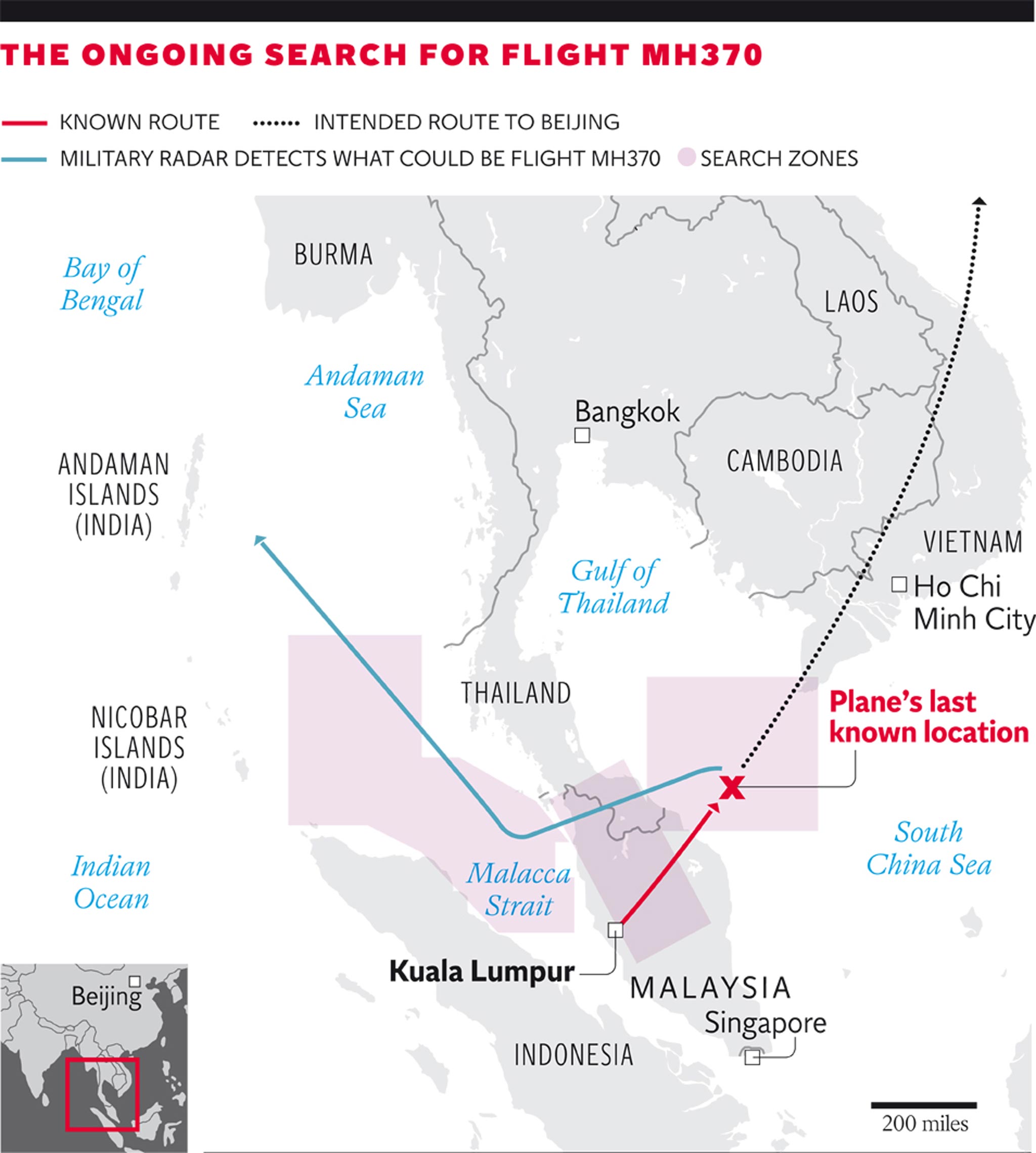Missing Malaysia Airlines Flight MH370: New radar evidence suggests missing plane may have been hijacked
‘Pings’ were received for as much as five hours after the plane vanished

Your support helps us to tell the story
From reproductive rights to climate change to Big Tech, The Independent is on the ground when the story is developing. Whether it's investigating the financials of Elon Musk's pro-Trump PAC or producing our latest documentary, 'The A Word', which shines a light on the American women fighting for reproductive rights, we know how important it is to parse out the facts from the messaging.
At such a critical moment in US history, we need reporters on the ground. Your donation allows us to keep sending journalists to speak to both sides of the story.
The Independent is trusted by Americans across the entire political spectrum. And unlike many other quality news outlets, we choose not to lock Americans out of our reporting and analysis with paywalls. We believe quality journalism should be available to everyone, paid for by those who can afford it.
Your support makes all the difference.Malaysian prime minister Najib Razak has said that investigators believe the missing Malaysian Airlines Flight MH370 communications were deliberately disabled, that it turned back from its flight from Kuala Lumpur to Beijing and flew for more than seven hours.
Mr Najib said that authorities are now trying to trace the plane missing for more than a week across two possible "corridors" - a northern corridor from northern Thailand through to the border of Kazakhstan and Turkmenistan, and a southern corridor from Indonesia to the southern Indian Ocean.
The announcement confirms days of mounting speculation that the disappearance of the Malaysia Airlines Boeing 777 a week ago with 239 people on board was not accidental, and that it was intentionally diverted or hijacked, by either a member of the crew or a passenger.
The investigation will now focus on who may have taken control of the plane and why, and the search area vastly expanded.
Mr Najib said that searching in the South China Sea, where the plane first lost contact with air traffic controllers, would be ended. He said the new search corridors were based on the latest available satellite data.
"Clearly the search for MH370 has entered a new phase," he said. "We hope this new information brings us one step closer to finding the plane."
The Andaman and Nicobar islands and the area around them were increasingly the focus of search efforts, as reports said officials were re-examining the possibility that foul play was responsible for the plane’s disappearance.
Inmarsat, the London-based communications company, confirmed that its satellites covering the region received “ping” signals from the Boeing 777 after it vanished from civilian radar and stopped communicating with the ground shortly after the plane took off in the early hours of 8 March.
The “ping” signals, sent from satellites if the aircraft has not been in contact for some time, were sent out hourly, providing information about the speed at which the plane was travelling and its altitude, which could help determine the plane’s location. Such communication between the aircraft and satellites is possible only when the plane is airborne. It is understood ‘pings’ were received for as much as five hours after the plane vanished.
Despite the vast international search operation, officials in Kuala Lumpur said yesterday that there was still no trace of the Boeing 777.
Malaysia’s Transport Minister, Hishammuddin Hussein, told a press conference that investigators were broadening their search again and examining the possibility that the plane’s transponder was deliberately shut down. He also said police were looking into the background of all the passengers and crew. More than half the passengers came from China.
“A normal investigation becomes narrower with time, as new information focuses the search. But this is not a normal investigation,” Mr Hussein said. “In this case, the information we have forces us to look further and further afield.
A US official, who spoke on condition of anonymity, told the Associated Press that investigators are examining the possibility of “human intervention” in the plane’s disappearance, adding it may have been “an act of piracy”.

Mr Hussein cautioned against speculation but maintained that there were several avenues of investigation along such lines.
“There are four or five possibilities which we are exploring. It could have been done intentionally, it could be done under duress, it could have been done because of an explosion,” he said. “That’s why I don’t want to go into the realm of speculation. We are looking at the all the possibilities.”
Syed Akbaruddin, a spokesman for India’s foreign ministry, told The Independent that India – one of 12 countries involved in the search effort – had been asked by Malaysia to search 22 specific locations in the Andaman Sea, which it estimates will take at least three days. The Indian-controlled archipelago contains 572 islands covering an area of 450 miles by 32 miles. Only 37 are inhabited and the majority are covered in dense forests.
The plane’s last location was fixed at 1.31am on Saturday. At that point it was heading north-east across the mouth of the Gulf of Thailand on what should have been a six-hour flight to Beijing. The Malaysian military said dots on secondary radar – still not confirmed as Flight MH370 – showed something heading west around 45 minutes later.

If the plane flew for a further four hours from its last known location it could have covered another 2,000 miles, putting it within easy touch of India, Indonesia and even the north-west coast of Australia.
On Thursday, Jay Carney, the White House spokesman, suggested there was new information had led the US to focus efforts on extending the search westwards. The US has since sent a destroyer and a sophisticated surveillance aircraft to the Indian Ocean,
“It’s my understanding that based on some new information that’s not necessarily conclusive – but new information – an additional search area may be opened in the Indian Ocean,” he said.
“There are a number of possible scenarios that are being investigated as to what happened to the flight.”
Malaysia has been criticised for the slow pace of the search operation and the often seemingly confused information it has provided.
Yet officials have pointed out they are trying to co-ordinate the efforts of a dozen countries and share sensitive information.
On Friday it emerged that experts from Britain are to join the investigation. A senior team from the Department of Transport’s Air Accidents Investigation Branch is due to arrive shortly in Malaysia.
Additional reporting by PA
Join our commenting forum
Join thought-provoking conversations, follow other Independent readers and see their replies
Comments